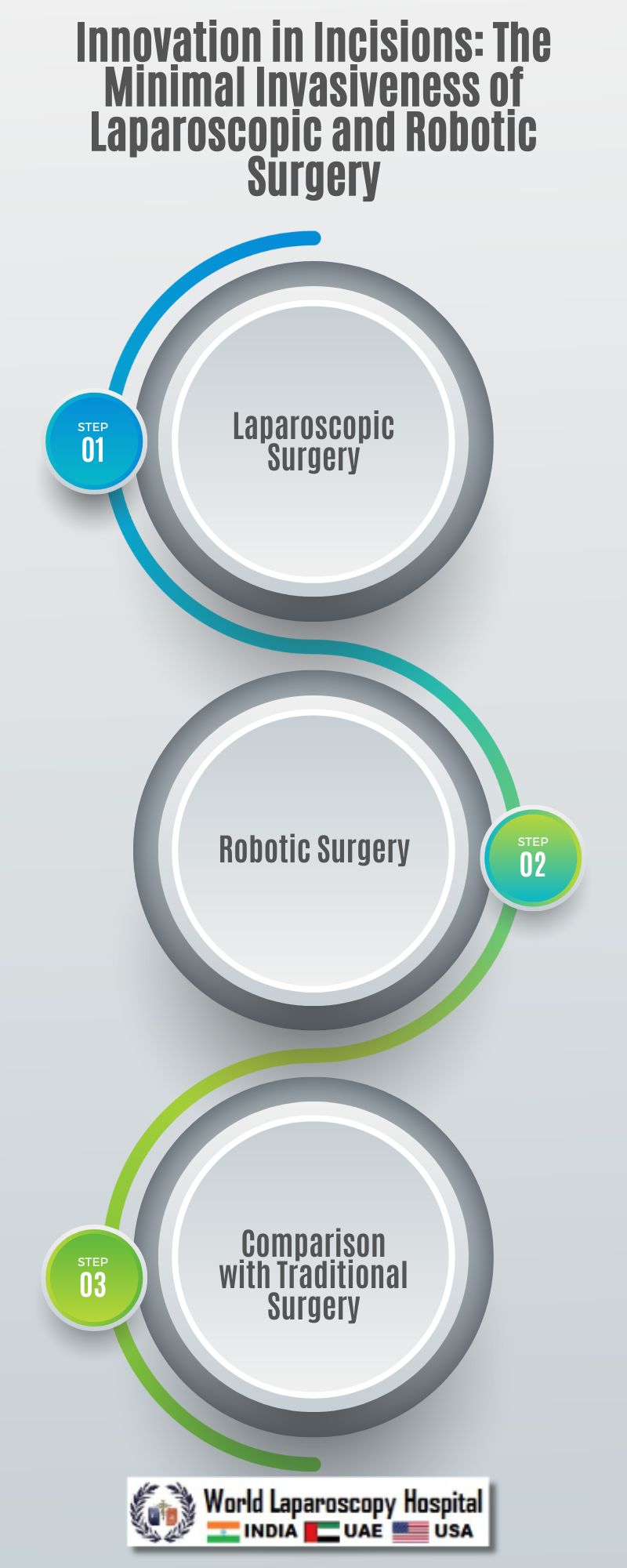Introduction
Surgical procedures have evolved significantly over the years, with innovations aimed at reducing the invasiveness of surgeries and improving patient outcomes. Laparoscopic and robotic surgery are two such innovations that have revolutionized the field of surgery, offering patients less pain, faster recovery times, and reduced risk of complications compared to traditional open surgeries. This article explores the evolution of minimally invasive surgeries, focusing on laparoscopic and robotic techniques, their benefits, and future implications.

Evolution of Minimally Invasive Surgery
The concept of minimally invasive surgery can be traced back to the early 20th century when the first attempts were made to perform surgeries through small incisions. However, it was not until the 1980s that laparoscopic surgery gained widespread acceptance. Laparoscopy involves making small incisions in the abdomen and using a camera (laparoscope) to visualize internal organs. This technique reduces the need for large incisions, resulting in less tissue damage, reduced pain, and faster recovery times.
Laparoscopic Surgery: Advantages and Applications
Laparoscopic surgery offers several advantages over traditional open surgery. Firstly, it allows for better visualization of the surgical site, thanks to the high-definition camera used in the procedure. This leads to more precise surgical movements and reduced risk of damage to surrounding tissues. Secondly, laparoscopic surgery requires smaller incisions, resulting in less postoperative pain and scarring. Additionally, patients undergoing laparoscopic surgery typically experience shorter hospital stays and faster recovery times compared to open surgery.
Laparoscopic surgery has been used in a wide range of surgical procedures, including cholecystectomy (gallbladder removal), appendectomy (appendix removal), and hernia repair. It is also used in gynecological surgeries such as hysterectomy (uterus removal) and oophorectomy (ovary removal). The minimally invasive nature of laparoscopic surgery makes it particularly suitable for patients with certain health conditions, such as obesity, who may be at higher risk of complications from open surgery.
Robotic Surgery: The Next Frontier
Robotic surgery represents the next step in the evolution of minimally invasive surgery. This technique uses robotic arms controlled by a surgeon to perform surgical procedures with enhanced precision and control. Robotic surgery offers several advantages over laparoscopic surgery, including a greater range of motion for the surgical instruments and improved ergonomics for the surgeon.
One of the key features of robotic surgery is the use of a three-dimensional high-definition camera, which provides a magnified view of the surgical site. This allows for more precise surgical movements and better visualization of anatomical structures. Robotic surgery also offers the ability to perform complex procedures with greater accuracy, making it particularly suitable for procedures such as prostatectomy (prostate removal) and cardiac surgery.
Benefits of Minimally Invasive Surgery
Minimally invasive surgery offers several benefits for patients. Firstly, it results in less postoperative pain and discomfort compared to traditional open surgery. This can lead to shorter hospital stays and faster recovery times, allowing patients to return to their normal activities sooner. Secondly, minimally invasive surgery reduces the risk of complications such as infection and excessive bleeding, as the incisions are smaller and the surgical trauma is minimized. Finally, minimally invasive surgery typically results in better cosmetic outcomes, with smaller scars compared to open surgery.
Future Implications and Challenges
The future of minimally invasive surgery looks promising, with ongoing advancements in technology and techniques. One area of research is the development of single-incision laparoscopic surgery, which aims to further reduce the invasiveness of surgical procedures by using a single small incision. Another area of interest is the use of augmented reality and artificial intelligence to enhance the capabilities of robotic surgery, allowing for even more precise and efficient procedures.
However, there are also challenges that need to be addressed. One such challenge is the cost of robotic surgery, which can be higher than traditional laparoscopic surgery. This cost barrier may limit the accessibility of robotic surgery to certain patient populations. Additionally, there is a learning curve associated with robotic surgery, and surgeons need to undergo specialized training to become proficient in this technique.
Conclusion
Minimally invasive surgery has revolutionized the field of surgery, offering patients less pain, faster recovery times, and improved outcomes compared to traditional open surgery. Laparoscopic and robotic surgery are two innovative techniques that have played a significant role in this evolution. While there are challenges associated with these techniques, ongoing advancements in technology and techniques are expected to further improve the outcomes of minimally invasive surgery in the future.